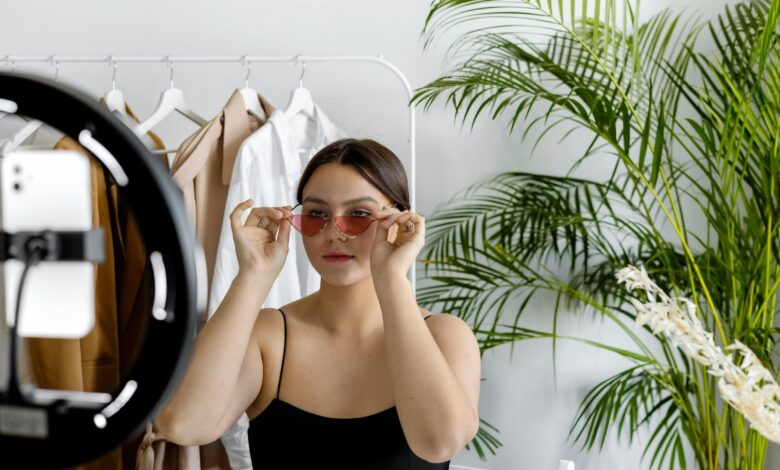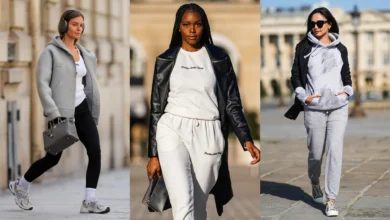Sustainable Eyewear Brands Leading the Way in 2025

Sustainability has officially taken center stage in the fashion world, and 2025 is no different. With eco-conscious consumers increasingly shaping demand, every purchase matters, even down to what we wear on our faces. Sustainable eyewear is emerging as an innovative solution to reducing the fashion industry’s environmental footprint. From everyday blue-light glasses to stylish prescription sunglasses, the movement toward environmentally responsible eyewear is redefining what it means to be both fashionable and green.
This post explores the transformation of the eyewear industry, highlighting the environmental impact of traditional manufacturing, the rise of sustainable alternatives, and the brands leading this change. You’ll also learn practical tips for identifying sustainable eyewear and a glimpse into the cutting-edge innovations shaping its future.
Why the Eyewear Industry Needs to Change
The eyewear industry has long been dominated by traditional practices that are far from sustainable. The production of eyeglass frames, lenses, and accessories often involves carbon-heavy processes, non-renewable raw materials, and excessive waste. Plastics, for instance, are a staple in the creation of blue-light glasses and prescription sunglasses, yet most traditional materials are not biodegradable, posing a threat to the planet.
According to industry reports, over four billion pairs of glasses are manufactured annually, leaving behind massive volumes of scrap materials. From the extraction of resources to energy-intensive production, conventional eyewear comes at a significant environmental cost.
With consumers demanding change, brands are rethinking how they design and produce glasses. The emergence of sustainable eyewear addresses pressing environmental challenges while empowering individuals to make more conscious choices.
What Makes Eyewear “Sustainable”?
Sustainable eyewear stands apart from traditional eyeglasses thanks to its thoughtful design philosophy. Here’s what sets it apart:
1. Eco-Friendly Materials
Sustainable eyewear often features renewable materials like bamboo, wood, recycled ocean plastics, and plant-based acetate. These alternatives reduce dependency on petroleum-based plastics while opening doors to unique, stylish designs.
2. Ethical Production Practices
From fair wages to waste reduction, ethical practices help lower the footprint of creating blue-light glasses and prescription sunglasses. Sustainable brands often work with manufacturers who adhere to eco-friendly and ethical guidelines.
3. Recycling and Upcycling Initiatives
Some companies now offer take-back programs, collecting old glasses for recycling or even repurposing them into new frames. This closed-loop system prevents waste and maximizes the lifecycle of materials.
How to Identify and Choose Sustainable Eyewear
When shopping for sustainable eyewear, don’t just settle for labels. Here are some tips to choose responsibly:
1. Research Material Transparency
Look for brands that disclose the materials they use. Check if they include recycled plastics, plant-based acetate, or other renewables in their prescription sunglasses or blue-light glasses.
2. Scrutinize Certifications
Certifications like FSC (Forestry Stewardship Council) or Fair Trade often indicate a commitment to ethical production and sustainability.
3. Support Recycling Programs
If a brand offers recycling services or accepts old frames, that’s a good sign they’re committed to reducing waste.
4. Assess Durability
Durable designs prevent you from buying endless replacements. High-quality sustainable eyewear not only lasts longer but is also more cost-effective in the long run.
The Future of Sustainable Eyewear
The sustainable eyewear industry is poised for remarkable growth, marked by technology-driven innovations and evolving consumer needs. Emerging developments include:
1. Smart Glasses Integration
Sustainably-produced smart glasses that combine fashion with convenience are gaining popularity. These may include features like UV light adaptability or integrated blue-light filters for work and leisure.
2. Circular Economy Models
More brands are committing to closed-loop production systems, ensuring materials from broken or unused glasses are automatically recycled into new products.
3. Custom 3D Printing
On-demand, 3D-printed eyewear can help minimize waste, allowing consumers to choose tailor-made designs while technicians use only what is necessary for each frame.
Conclusion
The eyewear industry is at a turning point. By choosing sustainable options, whether for prescription sunglasses or the blue-light glasses you rely on during work, you contribute to a greener planet and healthier future. Conscious consumer decisions can influence how brands operate, demonstrating demand for sustainable practices.




